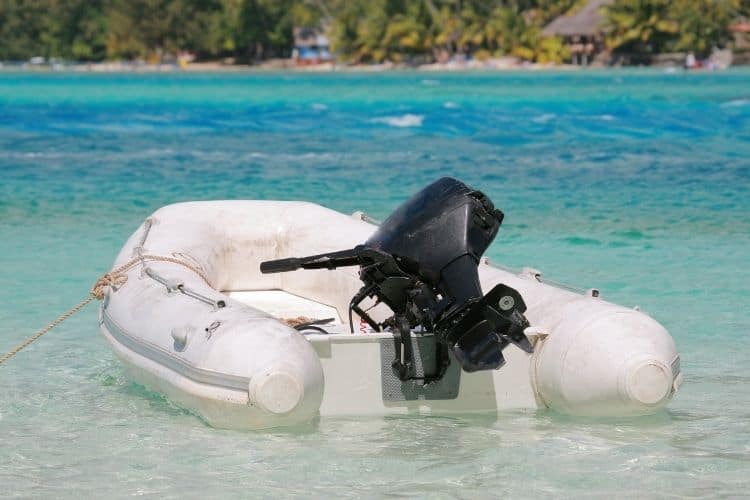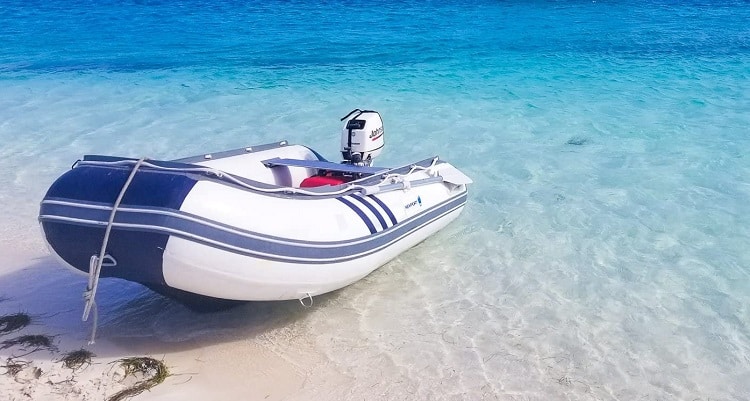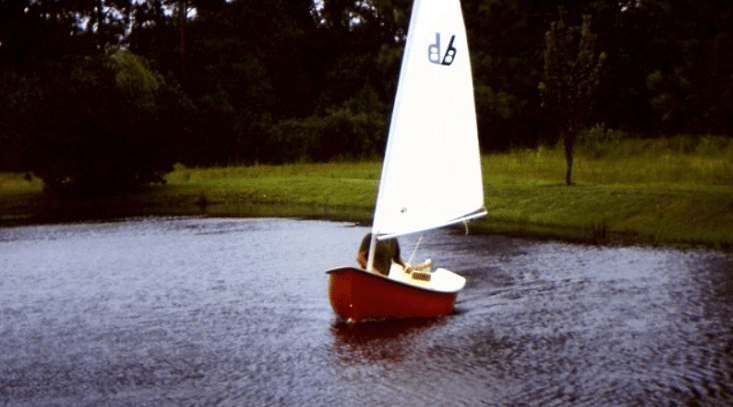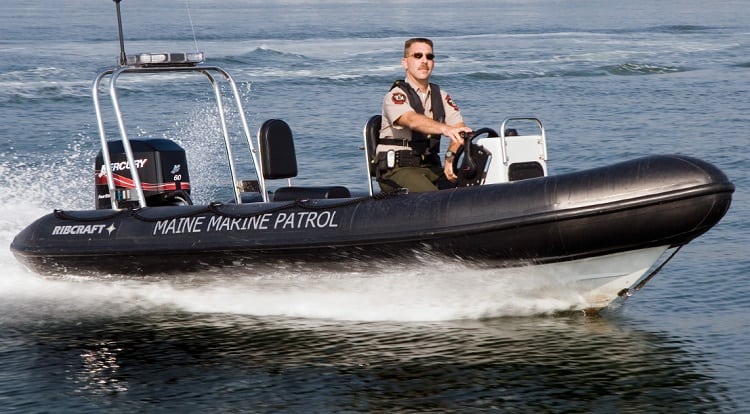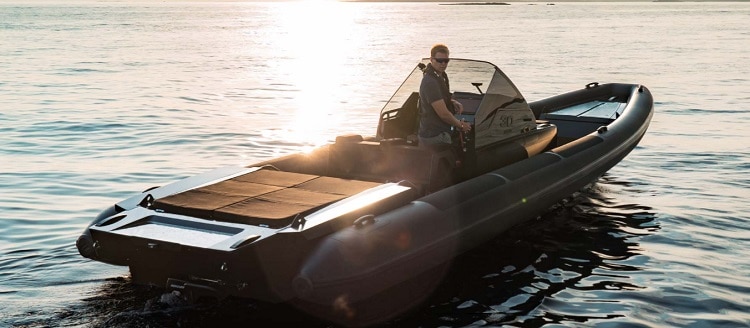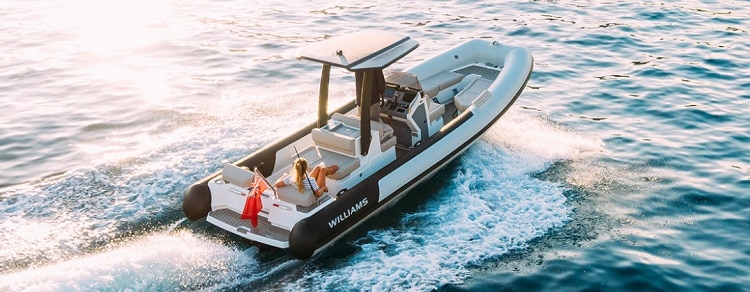- Tender Boat Types and Models That You Should Consider - June 6, 2021
Boat tenders are a vital addition to every moderately sized vessel on the water. The name ‘tender’ comes directly from their main objective, to tend to the needs of a larger vessel.
Tenders boat types and models serve as an alternative way to leave the primary vessel in aim to complete a variety of purposes including transporting people and supplies between shore and vessel quickly, exploring shallow waters and narrow coves, visiting neighboring vessels while at anchorage, and a wide range of water sports.
Large vessels are equipped with tenders of a vast array of sizes, however, smaller vessels also have tenders that are often referred to as dinghies. The terms tenders and dinghies are commonly used interchangeably within the boating industry.
Types of Tenders
With the basic understanding of what a tender is under our belt, let us dive into the nitty-gritty and explore the different types of tenders available today.
While seamen once exclusively utilized wooden rowboats for their primary tenders- the modern boating industry continues to evolve, therefore so does the variety and accessibility of tenders. Choosing the appropriate tender for your vessel, cruising style, and daily activities is important, although sometimes a daunting task.
Thankfully this task doesn’t have to come with a headache when you are provided with all of the relevant information in one place, and you’ve found just the place! Skip down to the table provided below to view a compact and concise comparison of the tenders that will be discussed immediately below.
Inflatable Tenders
Inflatable tenders are often sought after to accompany a smaller vessel or accommodate bluewater cruisers. They are lightweight and completely collapsible requiring less power to tow or space to stow. As inflatable tenders are completely collapsible, they do require a considerable amount of time to reassemble and inflate prior to use.
Although inflatable tenders are a category of their own, within it still lie many varieties. One of the most important aspects to consider is which material the tender is constructed of. Within these two categories the most common materials used in modern manufacturing of inflatable tenders are Hypalon (CSM) and PVC, however, Vinyl, Urethane, and Neoprene (CR) are also utilized to a lesser degree.
Hypalon is a rubber material with many perks such as high UV and temperature resistance, durability, as well as its ability to handle chemicals and abrasion gracefully. The one major downfall of Hypalon is its high price tag in comparison with other manufacturing materials.
PVC is a common inexpensive and lightweight plastic material used in the manufacturing of a range of aquatic water toys, everything from your common department store inflatables to professional tenders. The low durability of this material is what many consider its biggest flaw.
One of the biggest advantages of an inflatable tender is the price tag. These tenders are the least expensive to invest in, but keep in mind that with the low cost you will also be sacrificing some luxuries such as passenger/operator comfort, durability, and floor rigidity and stability.
With an inflatable floor, it can make standing, loading, and unloading difficult tasks- especially if someone hasn’t become familiar with their sea legs yet.
For those who have acknowledged this as a safety hazard or inconvenience- thankfully there are ways around it. Slats may be inserted atop of the floor within an inflatable tender creating a more stable environment to move about on.
These slats are ideally manufactured for your exact tender and must fit the dimensions of your tender as, of course, there is a risk of puncturing the inflatable material if installed incorrectly or are incompatible with your tender.
Due to the lightweight of inflatable tenders, they have the ability to be operated solely with oars if desired. Whichever propulsion is chosen, it is very important to keep in mind that these tenders are only safe to operate in fair weather due to the possibility of wind, current, and swell that can quickly take full control of this type of tender.
Main Virtue: Low price tag // Easily towed and stowed
Main Vice: Only to be operated in fair weather regardless of type of propulsion // Low durability
Top Recommendations
Model: Newport Vessels Santa Cruz
- Length Overall: 10’0″
- Width: 5’0″
- Load (persons / lbs): 4 people / 1124lbs
- Weight (lbs): 99lbs
- Max HP: 10HP
- Contact: https://newportvessels.com
- Suggested Retail Price (USD): $1,199
Model: Takacat T260 LX
- Length Overall: 8’6”
- Width: 5’1”
- Load (persons / lbs): 3 people / 793lbs
- Weight (lbs): 55lbs
- Max HP: 8HP
- Contact: www.takacatamericas.com
- Suggested Retail Price (USD): $1,790
Model: BRIS BSA380
- Length Overall: 12’6”
- Width: 6’0″
- Load (persons / lbs): 6 people / 1675lbs
- Weight (lbs): 180lbs
- Max HP: 25HP
- Contact: www.brisinflatable.com
- Suggested Retail Price (USD): $1,459
Solid Tenders
When you imagine a solid tender, you may be picturing a classic wooden rowboat- but in this day and age, that is far from the only option available to you. These are often strong, durable, and heavy tenders crafted from various materials such as wood, fiberglass, or aluminum.
As these tenders are heavy, they are often powered by outboard engines as opposed to manual propulsion with oars- however, both are still currently utilized, environment-dependent.
Unlike docking with tenders with inflatable tubes, these require a more gentle approach to protect both the primary vessel, dock, as well as the solid tender itself. Often fenders and rub rails are added to these tenders as an additional precaution.
Most solid tenders that are on the market today are constructed of three main materials: wood, fiberglass, or aluminum. Each of these has its own advantages and disadvantages.
Wood, as classic as it comes, is still a very common material in the construction of solid tenders today, especially homemade versions. As common as the material itself are the issues that accompany it. Wood rot and constant maintenance are a couple of things to keep in the front of your mind when choosing a material for your solid tender.
A few of the things that it does have going for it are its strength to weight ratio as well as it being the only natural and sustainable building material of the three being presented.
Fiberglass is a glass-reinforced plastic (GRP) material that is also very commonly seen in the build of solid tenders. These tenders are strong, durable, heavy, and fairly friendly on the wallet to construct. Fiberglass does require moderate maintenance, however, when properly cared for these tenders can last for decades.
Aluminum is the most ideal material of the three as it is durable, lightweight, corrosion and abrasion-resistant, and very low maintenance. With all of these perks that it has going for it, it is still the least utilized material for building solid tenders due to its moderately high price tag.
Solid tenders are a very reliable and enduring addition to the primary vessel as there is no inflatable patching and less weather dependence required.
Keep in mind, however, that depending on the material it is constructed of, they may require continual maintenance to keep them watertight and seaworthy. Although inadvisable to test the limits, solid tenders have a much better ability to handle harsh weather conditions than inflatable tenders.
Main Virtue: Strength // Durability
Main Vice: Their heavyweight makes these tenders more difficult to tow and stow, especially for single-handers
Top Recommendations
Model: Bauteck Marine Bauer 8
- Length Overall: 8’2”
- Width: 4’0’
- Load (persons / lbs): 3 people / 450lbs
- Weight (lbs): 95lbs
- Max HP: 2HP
- Contact: http://www.bauteckmarine.com
- Suggested Retail Price (USD): $2,000
Model: Puffin 860
- Length Overall: 8’6’
- Width: 4’1”
- Load (persons / lbs): 3 people / 661lbs
- Weight (lbs): 80lbs
- Max HP: 2HP
- Contact: https://www.puffinboatcompany.com
- Suggested Retail Price (USD): $2,295
Model: Whitehall Spirit Minto 9
- Length Overall: 9’1”
- Width: 5’0”
- Load (persons / lbs): 3 people / 480lbs
- Weight (lbs): 130lbs
- Max HP: 4HP
- Contact: www.whitehallrow.com
- Suggested Retail Price (USD): $8,995
RHIB (Rigid-hulled Inflatable Boat) Tenders
If you find yourself going back and forth in your mind between inflatable and solid tenders, these best-of-both-worlds tenders are your sweet spot. RHIBs offers a solid and sturdy floor in combination with the lightweight of inflatable tenders.
With their solid bottom, these tenders are very durable in the appropriate conditions, however, they are still susceptible to air leaks within the inflatable tubes. These tenders offer a fast mode of transportation while planeing, smooth maneuverability, and with some practice, are very easy to learn and operate.
RHIBs are constructed of both inflatable and rigid materials. The materials used for the inflatable portion are most often Hypalon (CSM) or PVC, however, Vinyl, Urethane, and Neoprene (CR) are also utilized. For the rigid hull, fiberglass is most commonly used, with aluminum, a more expensive option, being an occasional substitute.
The price tag on these tenders varies widely as there is a large variety of RHIBs within themselves. Options for this category of tenders include splash guards, center cockpits, tiller, a vast array of suitable outboard engines, jet drive, z drive, and the list is expanding constantly.
Main Virtue: Very balanced option of tender in terms of price and features
Main Vice: Seemingly endless options of models and upgrades within the category
Top Recommendation
Model: Highfield Classic 260
- Length Overall: 8’6”
- Width: 5’7”
- Load (persons / lbs): 4 people / 794lbs
- Weight (lbs): 119lbs
- Max HP: 15HP
- Contact: https://highfieldnorthamerica.com
- Suggested Retail Price (USD): $3,530
Model: Carib Nautica DL11
- Length Overall: 11’1”
- Width: 5’7”
- Load (persons / lbs): 5 people / 1238lbs
- Weight (lbs): 341lbs
- Max HP: 40HP
- Contact: https://caribenautica.com
- Suggested Retail Price (USD): $9,600
Model: Ribcraft 4.8 Professional
- Length Overall: 15’7”
- Width: 6’11”
- Load (persons / lbs): 6 people / 1620lbs
- Weight (lbs): 685lbs
- Max HP: 70HP
- Contact: https://www.ribcraftusa.com
- Suggested Retail Price (USD): $20,400
Superyacht Tenders
Larger primary vessels require larger tenders, or should I say toys with their size and power? These tenders are truly dual purpose for both the formal business of transportation as well as blowing off steam with adrenaline-rushing watersports.
You can forget about oars with these large and heavy tenders as they are always equipped with engines, occasionally even inboard diesel. Stability, speed, durability, and comfort are never compromised with these tenders- however, keep in mind that all of these luxuries do come with a high price tag to reflect it as such.
As there is an increasingly huge market for superyacht tenders, there is also a very large variety of construction materials used in the manufacturing of these tenders, often dependent on the purpose and personal preference.
Hypalon (CSM) or PVC, Vinyl, Urethane, Neoprene (CR), Fiberglass, and Carbon Fibre are what you can expect to choose from if you decide that a superyacht tender suits your needs.
Carbon fiber is the MVP here out of the above-mentioned materials. This material is produced with the optimal outcome of a very lightweight without sacrificing strength and durability- in fact, its strength-to-weight ratio is double that compared to fiberglass.
This factor of favorable weight allows these tenders to sit higher out of the water, therefore gliding over waves with more ease- ideal for performance boats! This luxury item is often just that, a luxury. These tenders may indeed break some banks due to their construction demanding much more labor and technology-intensive processes.
With great power comes great responsibility. These tenders can reach speeds of up to 90-100 kts (knots). The risk for injury at these speeds is immense and conditions within the tender get increasingly rougher as the speed increases, therefore, operation of these tenders is only for those who are competent and confident to handle such tenders.
Main Virtue: Very fast & very fun!
Main Vice: High price tag // Dangerous to maneuver at high speeds
Top Recommendations
Model: Williams Evo Jet
- Length Overall: 22’9”
- Width: 8’6”
- Load (persons / lbs): 13 people / 3510lbs
- Weight (lbs): 4409lbs
- Max HP: 250HP
- Contact: www.williamsjettenders.com
- Suggested Retail Price (USD): Contact manufacturer for quote
Model: Goldfish 30 Sport
- Length Overall: 32’6”
- Width: 9’6”
- Load (persons / lbs): 8 people / 2160lbs
- Weight (lbs): 3968lbs
- Max HP: 370HP
- Contact: www.goldfishboat.com
- Suggested Retail Price (USD): Contact manufacturer for quote
Model: Techohull seaDNA 999G5
- Length Overall: 33’8”
- Width: 9’2”
- Load (persons / lbs): 8 people / 2160lbs
- Weight (lbs): 6393lbs
- Max HP: 2 x 450HP
- Contact: www.technohull.com
- Suggested Retail Price (USD): $180,000
Shadow Boat Tenders / Support Yachts
The largest of all of which could be considered a tender, shadow boats, are almost exclusively used as a secondary vessel for megayachts. As these boats can reach upwards of 500 ft in length, formal training is not only recommended but also required to operate shadow boats in a safe and legal manner.
All of these boats are equipped with strong inboard diesel engines. Maintenance required to keep shadow boats seaworthy is similar to that of a primary vessel and therefore, very extensive and expensive.
As the primary vessel may include the owner living aboard, these support yachts may be used as a crew liveaboard, storage for large water sports equipment, vehicles, helicopters, or garbage and wastewater holding.
The majority of these vessels are custom-built to suit the buyer’s exact requirements and prices can extend past the multiple millions of dollars per vessel.
Main Virtue: Perfect for large vessels who require privacy and extra storage space, and more budget-friendly than upgrading their current yacht to accommodate what the shadow boat would contain
Main Vice: Very large with an even larger price tag
| Type of Tender | Inflatable Tender | Solid Tender | RHIB Tender | Superyacht Tender | Shadow Boat |
| Size of Vessel Appropriate for Use | Small – Medium vessels | Small – Medium vessels | Small – Medium vessels | Large Vessels | Very Large Vessels |
| Stability | ⭐⭐ | ⭐⭐⭐ | ⭐⭐⭐⭐ | ⭐⭐⭐⭐⭐ | ⭐⭐⭐⭐⭐ |
| Power Necessary To Operate Optimally | Outboard Engine Optional | Outboard Engine Recommended But Optional | Outboard Engine | Majority Use Outboard Engine | Inboard Engine |
| Durability | ⭐⭐⭐ | ⭐⭐⭐⭐ | ⭐⭐⭐ | ⭐⭐⭐⭐⭐ | ⭐⭐⭐⭐⭐ |
| Passenger & Operator Comfort | ⭐⭐ | ⭐⭐⭐ | ⭐⭐⭐ | ⭐⭐⭐⭐⭐ | ⭐⭐⭐⭐⭐ |
| Stowage Options | • Towing • Disassembling & Deflating | • Towing • Davits • Foredeck | • Towing • Davits • Foredeck | • Davits • Foredeck • Stern Garage | • Most Often There Is An Inability To Stow |
| Ease of Operation | ⭐⭐⭐⭐⭐ | ⭐⭐⭐⭐⭐ | ⭐⭐⭐⭐⭐ | ⭐⭐ | ⭐ |
| Purpose | • Transportation of passengers, crew, and supplies | • Transportation of passengers, crew, and supplies • Water-sports (power dependant) | • Transportation of passengers, crew, and supplies • Water-sports (power dependant) | • Transportation of passengers, crew, and supplies • Water-sports • Everything in between | • Transportation of passengers, crew, and supplies • Water-sports • Liveaboard for primary vessel crew and guests |
| Price | $$ | $$$ | $$$$ | $$$$$ | $$$$$$ |
| Alternative Propulsion | • Oars | • Oars | • Oars | • N/A | • N/A |
| Most Commonly Used Materials in Manufacturing | • PVC • Hypalon (CSM) • Vinyl • Urethane • Neoprene (CR) | • Wood • Fiberglass • Aluminum | Inflatable Portion • PVC • Hypalon (CSM) • Vinyl • Urethane • Neoprene (CR) Rigid Hull Portion • Fiberglass • Aluminum | • PVC • Hypalon (CSM) • Vinyl • Urethane • Neoprene (CR) • Fiberglass • Carbon Fiber | • Fiberglass • Carbon Fiber • Aluminum |
| Weight | Lightweight | Lightweight – Moderately heavy | Lightweight | Very Heavy | Extremely Heavy |
| Safety | ⭐⭐⭐ | ⭐⭐⭐⭐ | ⭐⭐⭐⭐ | ⭐⭐⭐⭐⭐ | ⭐⭐⭐⭐⭐ |
| Maintenance | Light Maintenance | Light Maintenance | Light – Moderate Maintenance, Dependant Upon Size of Tender | Moderate – High Maintenance | Very High Maintenance |
Safety Aboard Your Tender
Trips in your tender may seem straightforward and uneventful, but the reality is that accidents happen. Here’s what you need to know before hitting the high seas in your new tender.
Become Familiar With The Kill Cord
This is your emergency kill switch aboard your tender. In the event that you fall overboard, you will be glad you clipped this small, flimsy cord to your lifevest.
When tension is applied to this cord it automatically kills the engine, allowing you to keep your limbs where they belong and saving you the stress of witnessing your tender make its way into the sunset.
Secure A Long Painter
The last thing you want is to arrive at your destination and realize that you have forgotten the essential item to secure your tender. A long painter also allows you to tie up to busy docks while creating space for yourself and others to drift out.
Check Your Tube Levels (if applicable)
Inflatable tubes have the tendency to fluctuate with the changing weather, deflating on cooler days and expanding under the heat of the sun. It is a wise idea to invest in a manual pump with a gauge for accurate inflation levels. Be sure to fill tubes appropriately and according to the manufacturer’s recommendation.
Check Fuel Levels
Save yourself the row home. With the weather, tides, and currents all playing a factor- it’s never a bad idea to have the maximum fuel in the tank, and even better if you have a spare jerry can secured aboard the tender.
Essential Items To Keep Aboard Your Tender

That cubby in the bow of your tender has more practical functions than acting as a drink cooler. Filling it, or another designated area of your tender, with the following items, will create a safe environment during foul weather, cases of emergency, or any unpredicted event that arises.
Life Vest
This essential safety item is a must-have on every tender, not only is it in your best interest- in many areas of the world, it’s the law.
Spare Lines
Depending on the quality of line that you decide to invest in, the lifespan and durability can be questionable at best sometimes. Additional lines can serve a variety of purposes aboard a tender such as acting as stern lines, tow lines, or stow additional items while underway.
Anchor
Regardless of size, an anchor aboard any vessel is always a necessity. Not only is an anchor useful to keep your tender in place while you take a quick dip, it also serves as an important piece of emergency equipment.
If your engine fails or weather conditions become more than you can safely handle, your tender may quickly become driftwood to the sea without an anchor.
Waterproof Torch
Lights are necessary for every operational vessel after dark. A waterproof torch will serve as a beacon for surrounding vessels to acknowledge your presence as well as allowing you to be aware of your immediate surroundings and potential dangers after nightfall.
Pump (if applicable)
With any inflatable tender, punctures are a real risk and a pump must be readily available to keep you and your passengers afloat.
Blade
The risk of running over a mooring ball or submerged line is higher than you would initially imagine and there is nothing worse than having a line tangled in your prop with no way to cut yourself loose. You will thank me for this one someday!
Bailer
Rain and leaks are unavoidable.. need I elaborate more on this one? Although absolutely necessary, nothing fancy is needed for a bailer. The simplest version, a decapitated milk jug, is often the best tool!
Mobile Phone or Handheld VHF
If ever an emergency arises that you cannot handle by yourself, you will want a way to call for help. Great quality handheld VHFs can be purchased online for under $100 and offer a serious sense of security not only when out on your tender but also when worn on your body while underway on the primary vessel- especially if single-handed.
Basic Inflatable Repair Kit (if applicable)
This one is a no-brainer for inflatable tender owners. You have the option to purchase a small, preassembled repair kit online or create one yourself. If you are choosing the latter, remember to include the following key items: Isopropyl alcohol, scissors, strong repair tape or patches, and UV repair adhesive.
Basic Mini Tool Kit
A small and simple case of must-haves is a good idea to have aboard your tender for those incidents where your outboard is feeling a bit stubborn. If yours is anything like mine, this is a near-daily occurrence- this kit has become my personal savior many times.
You can get as complex as you like here, but the basics to have aboard should include a convertible screwdriver with various heads, ratchet, vice grip pliers, a stiff wire brush, and of course, zip ties.
Oars
For reasons I hope are obvious, these will probably not be stowed in the bow cubby. It is preferable to have oarlocks as well as secure attachments of velcro or snap nature to stow along the sides of your dingy while not in use.
FAQs
Answer: Boat tenders range in size according to the size of the primary vessel. Often boat tenders are typically between 15 and 24 feet, although they can reach lengths beyond 500 feet.
Answer: Choosing the right tender is heavily dependent upon purpose, size, material preference, power, cruising style, and budget. Ample research, as well as personal recommendations, are the best ways to make an informed decision when purchasing your boat tender.
Answer: The price of a boat tender has an extraordinary range. The price of a boat tender will reflect the materials used in manufacturing, brand recognition and status, size, and condition.
You can expect to pay anywhere from $600 USD for the bare minimum of boat tenders to over $1,700,000 for the largest and most luxurious boat tenders on the market.
Conclusion
From basic inflatables to luxury superyacht tenders and everything in between, it has been demonstrated here that there is no one-style-fits-all in the boating industry. This investment must be done with special regards to your personal style, cruising preferences, and budget.
At the end of the day, what most of us boat owners are looking for in a tender is to arrive at our destination safely, efficiently, and dry. With a well informed tender purchase, dropping the anchor may very well be just the beginning of your adventure.


